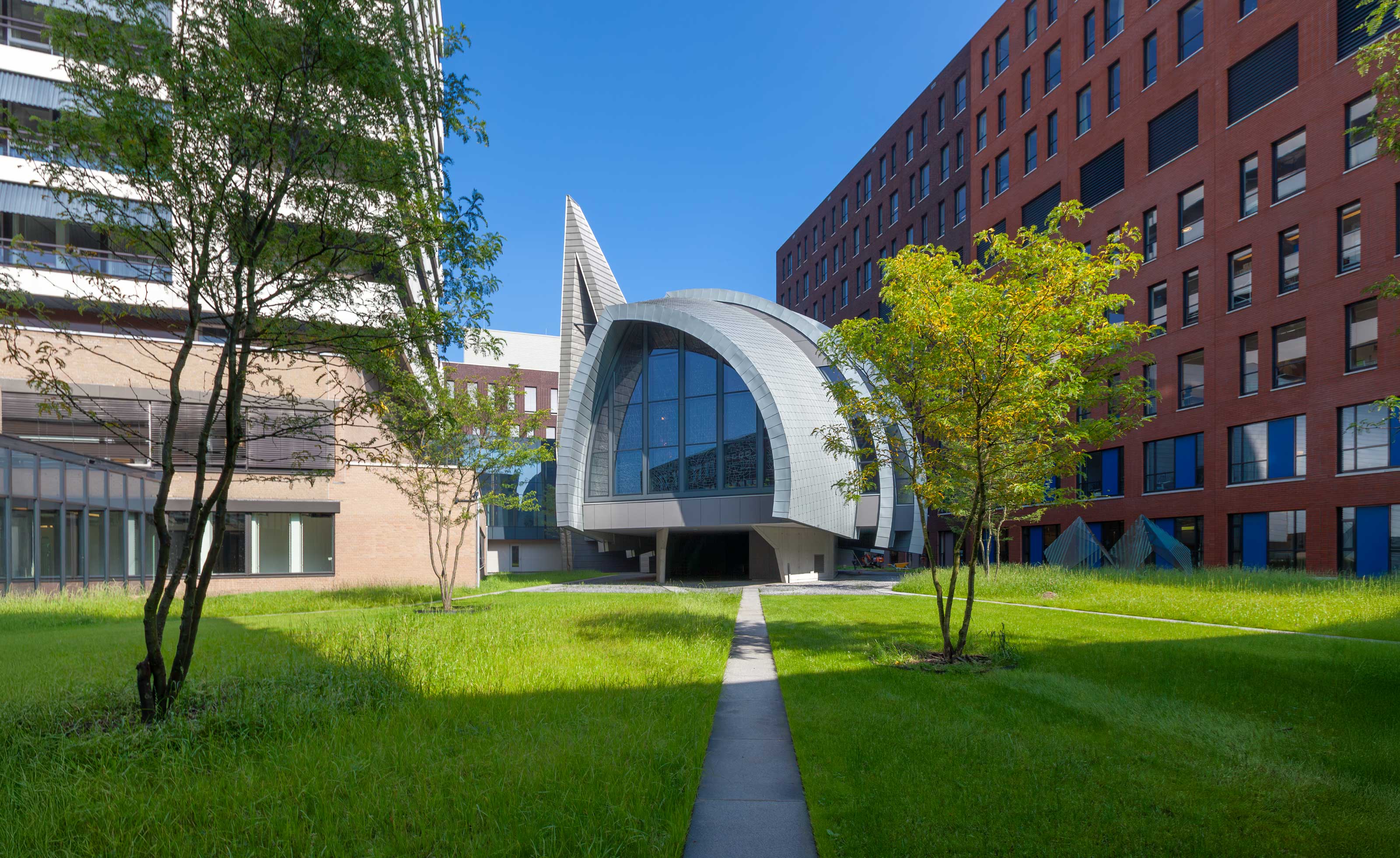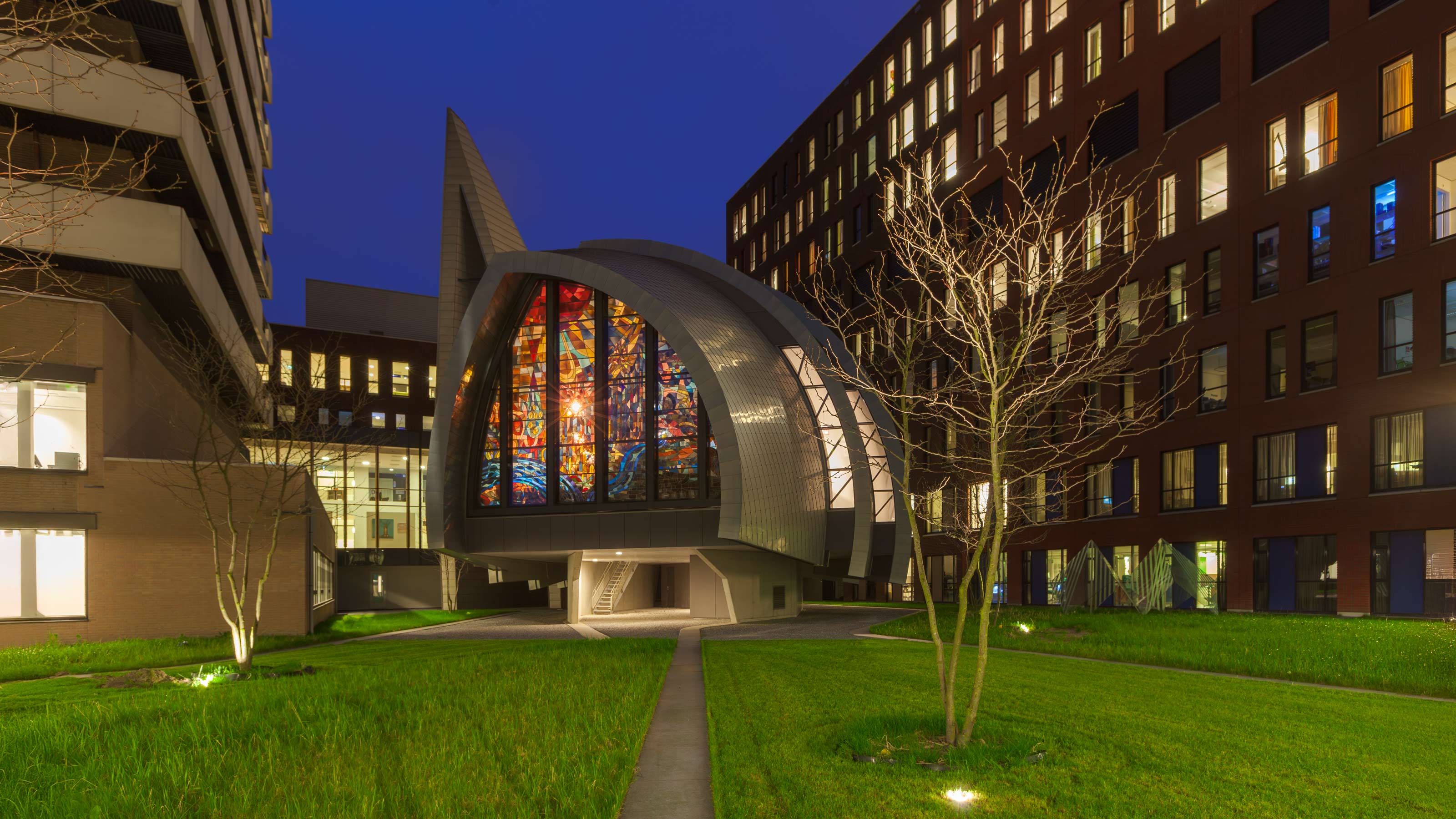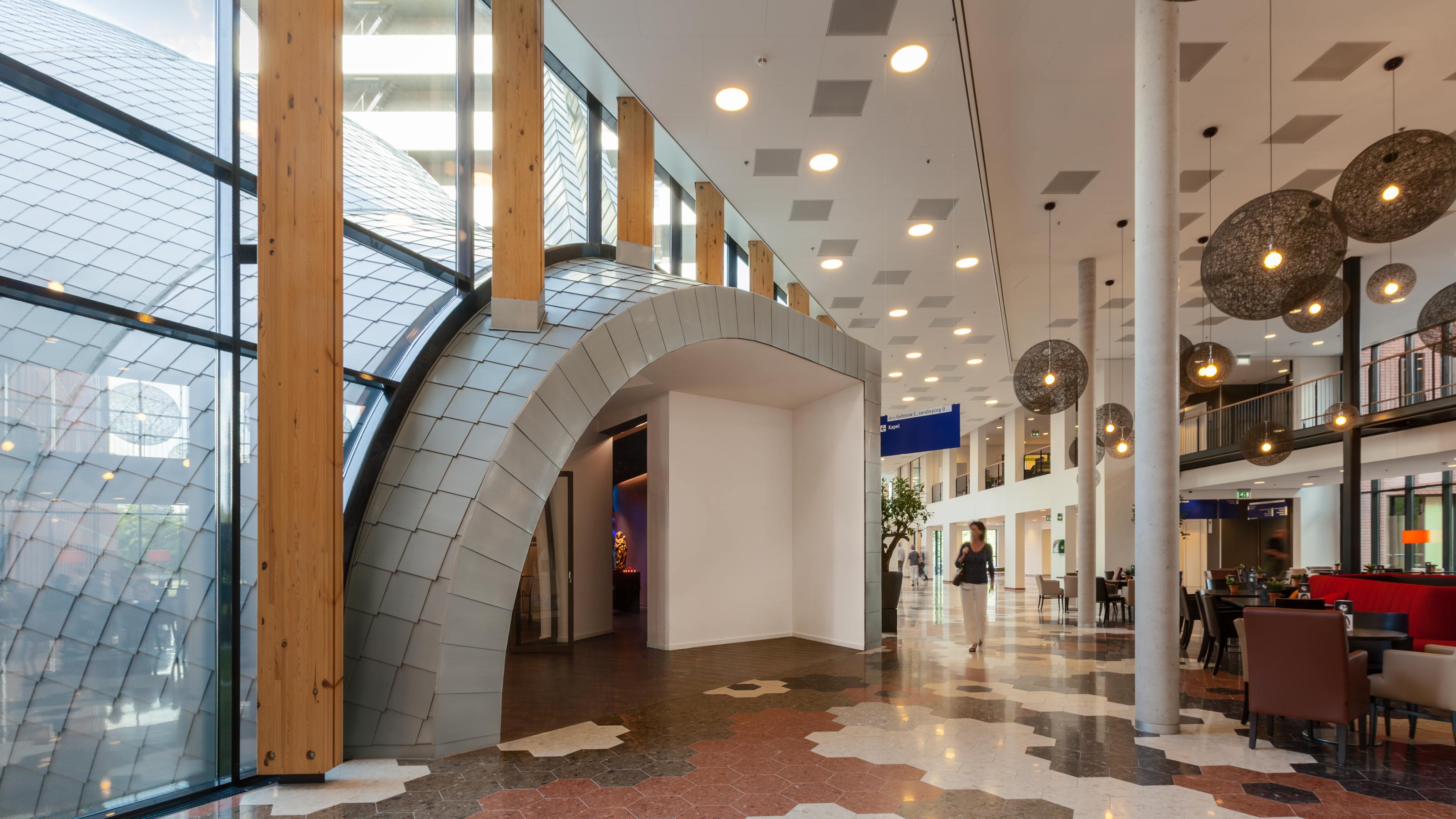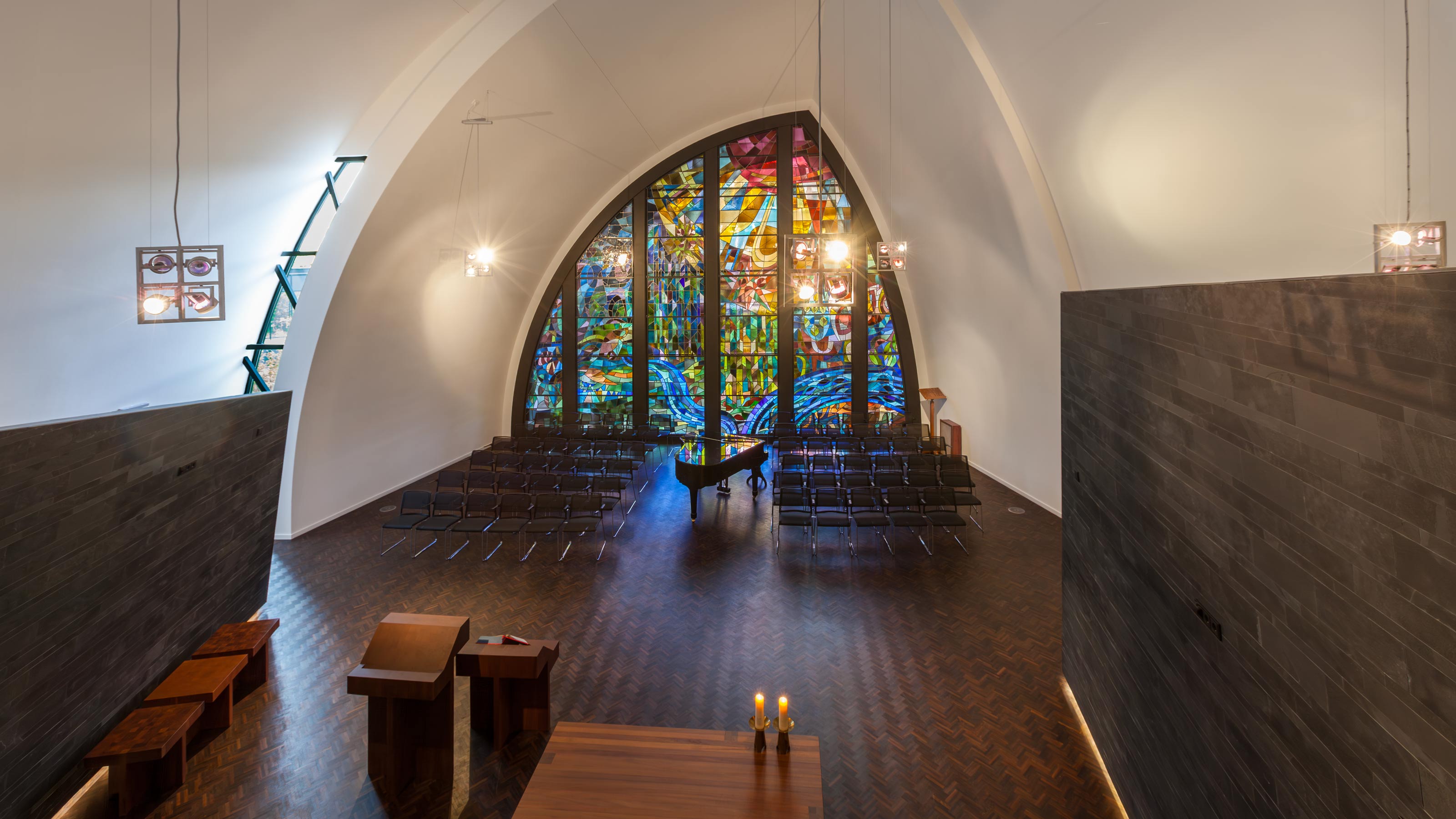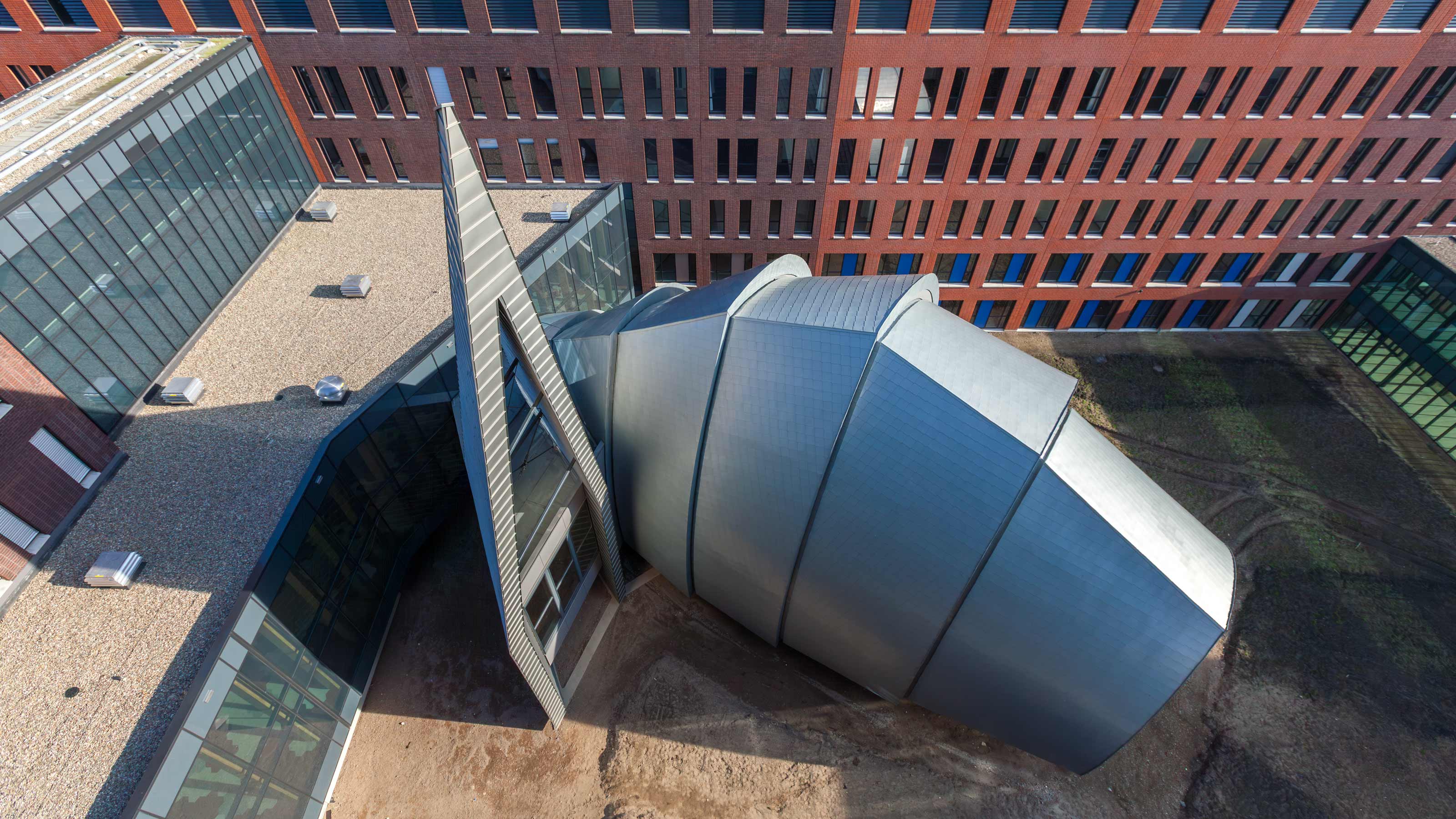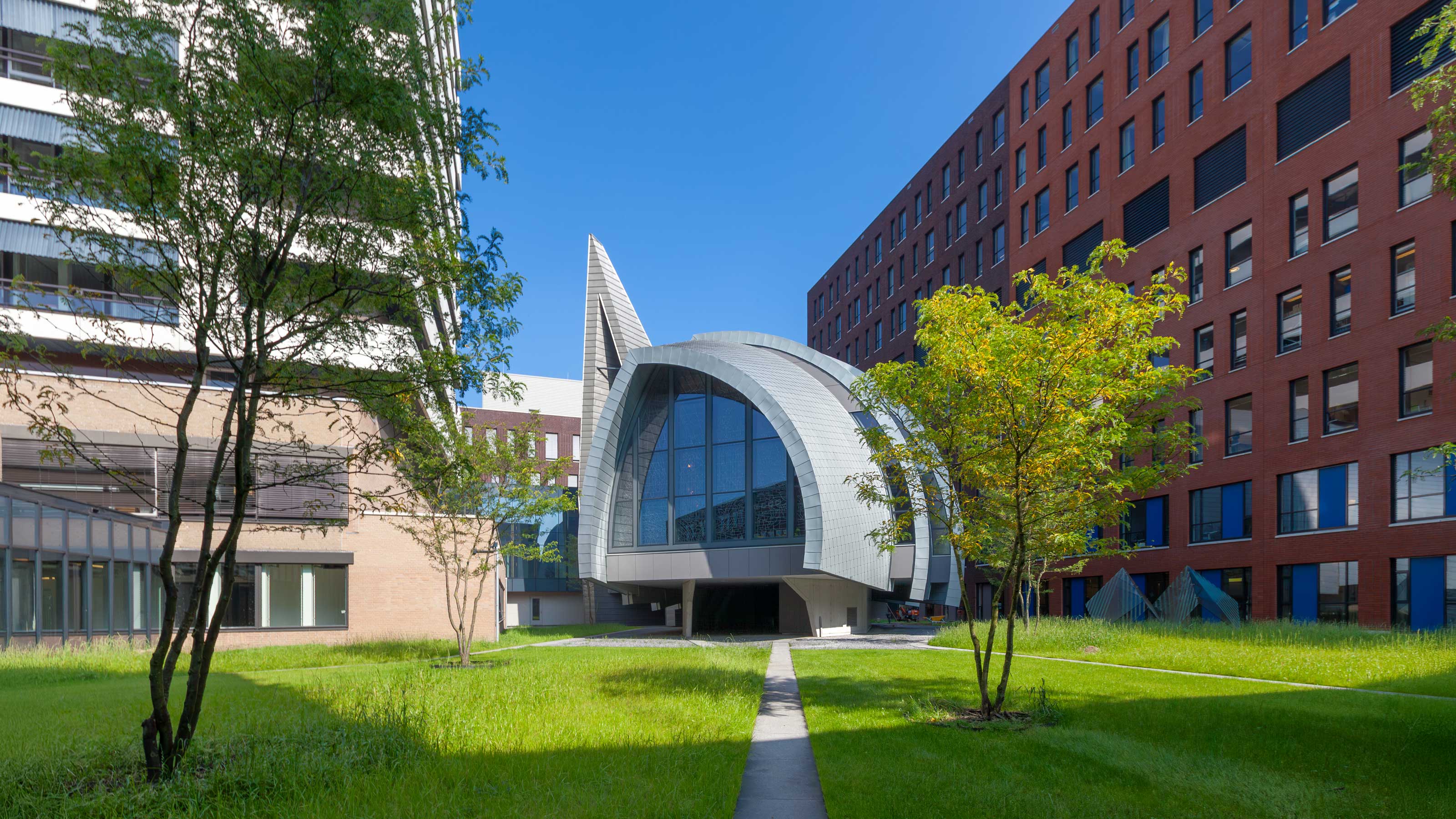Striking on the Outside, Peaceful Within
The chapel offers a space for reflection and comfort, open to everyone of all faiths and beliefs. Its organic form creates a welcoming atmosphere and provides a sense of security for those who seek it.
View the entire projectThe Jeroen Bosch Hospital is a hospital of the future, where there is literally more room for the patient and their experience, in which faith and hope play an important part. Inclusivity is key, and for this reason a modern chapel has been created in one of the hospital’s internal courtyards.
Distinctive yet intimate
The chapel consists of two parts: a tower containing the Mary Chapel, and the main chapel itself, an area beneath gently curving shells. Externally, the zinc-clad elements come together as an expressive sculpture. Inside, the interior is calm and understated. Where the roof shells overlap, strips of windows allow in diffuse, slanting light, which creates a natural and pleasant atmosphere. The restored stained-glass artwork, originally made for the Carolus Chapel in ’s-Hertogenbosch by local artist Marius de Leeuw (1915 – 2000), adds a warm and colourful glow. Combined with the dark wooden floor, the sparse lighting and the warm daylight, the result is an intimate and tranquil atmosphere—a true haven for those in need of comfort.
It is clearly a sacred form, reminiscent of an embrace
Bas Molenaar, EGM architects
Open to all
At the heart of the chapel stands a ‘rock’ — a naturally shaped block incorporating a balcony for the organ and space for a choir. The walls are clad in slate, giving the ‘rock’ a sense of character and solidity. The organ itself, carefully crafted from wood, tin, lead and iron, has been custom designed for the chapel. Inside the rock, at the floor level of the chapel, is a sacristy. Depending on visitors’ needs, the chapel provides space for prayer, a moment of peaceful silence or guided meditation. At other times, the chapel may also be used for small-scale concerts or lectures.
